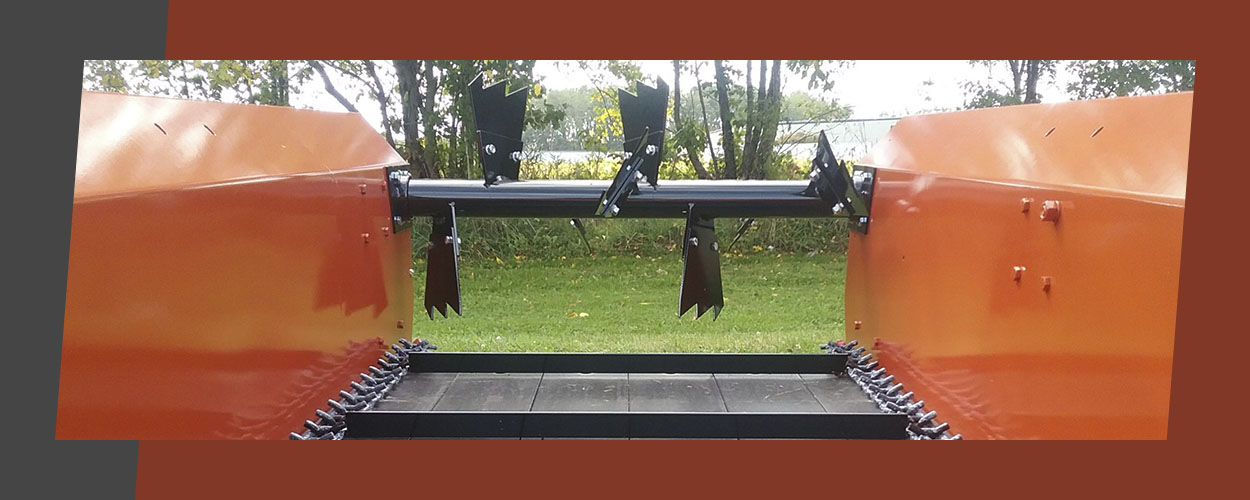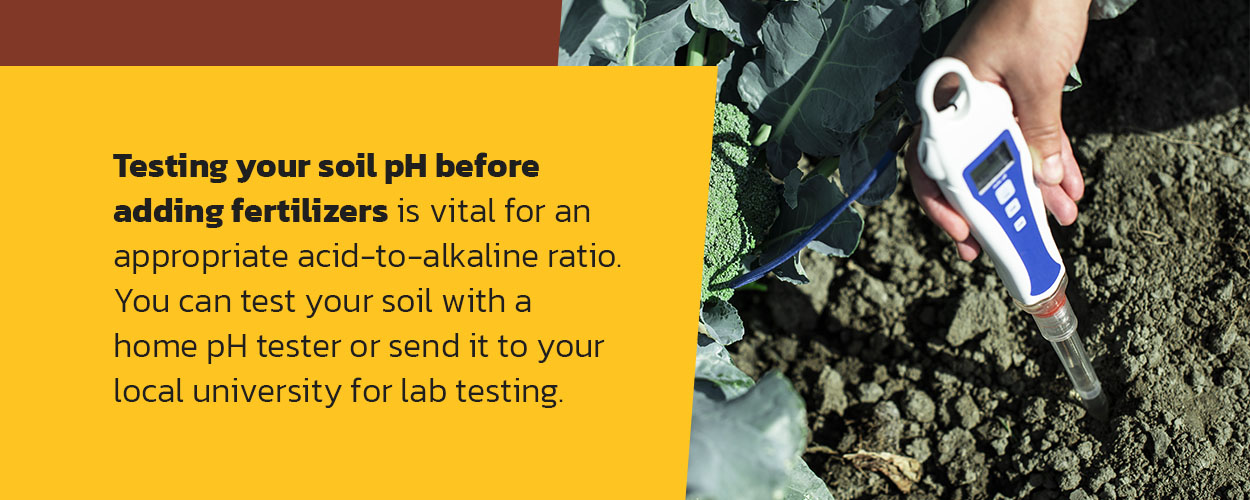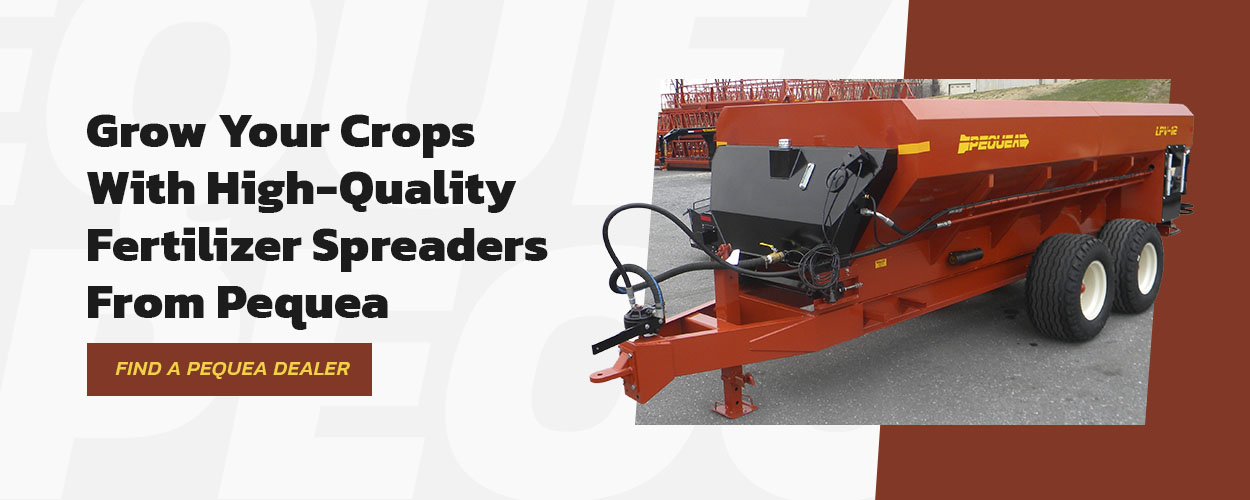Fertilizer Spreading Strategies for Different Crop Types
As a farmer, you must know how to keep your crops healthy and flourishing. That takes more than planting seeds and watching them grow. You must nourish, feed and treat your plants for the best results.
Fertilizers are vital for crop growth. They give your soil valuable micro- and macronutrients, promote excellent root growth, restore your crops' minerals and provide essential nourishment.
While fertilizers offer many benefits, using them in correct consistencies is critical to successful plant development. With unique fertilizer strategies, you can enrich your harvest while maintaining crop and soil health for many seasons.
What Is a Fertilizer Spreading Strategy?
Crops require varying strategies to enhance growth and yield. Farmers or growers must use the appropriate techniques to nourish plants before, during and after bloom. Spreading systems can involve applying powdered, liquid or granular fertilizers at the right time and in accurate quantiles. Here are the spreading methods for different crops.
1. Orchards
You can nurture your orchard with appropriate fertilizing methods. While fertilizer can be essential for growth, you may not need to apply it yearly. Measuring your crops' previous growth can help you decide. When fertilizing, you must use accurate quantities and techniques. Here's how to fertilize your orchard.
When to Fertilize
Fertilizing your orchard in the spring can enhance growth. You can fertilize your trees in budburst or early bloom to give them the nutrients they need to grow.
Test Your Soil
Caring for your soil is essential. You'll need to add sufficient minerals to your ground to enhance the nutrient quality. Over-fertilizing soil can inhibit orchard growth. You can test your soil to understand the nutrient content better and select the correct fertilizer.
Choose Your Fertilizer
Fruit tree, organic and high-nitrate fertilizers can provide your orchard with nutrients like potassium, nitrogen and phosphorus. You'll need to decide on the type of fertilizer, like liquid, granular and powdered. Your fertilizer will determine your spreading strategy.
- Liquid: Solutions can come premixed, meaning you don't have to dilute them. You can spray liquids over crops, providing a comprehensive and even distribution. You can also inject liquid fertilizer into the soil to increase nutrient intake.
- Spikes: Spikes go deep into the ground, injecting fertilizer into crop roots. This method may limit nutrient distribution to specific spots.
- Powdered: You spread powdered fertilizers on or around crops. You can dilute a powdered fertilizer with water and inject it into the soil for a versatile and convenient solution.
- Granular: You can spread granular fertilizers over and between trees. Granules are nutrient-dense and can extend far, wide and in narrow pathways, maximizing distribution.
Fertilizer Amount
Your fertilizer amount can depend on how much crop you harvest and your pruning methods. You'll want to use less fertilizer if you've over-pruned to prevent excess growth. Following fertilizer instructions is one of the best ways to use the right amount for your land.
Apply Fertilizer
Depending on your fertilizer type, you can spray, spread or inject it to ensure your crops get enough nutrients and care.
2. Vineyards
When fertilizing vineyards, you must use appropriate methods to get excellent grapes. You'll also need to apply fertilizers at various stages like budburst, pre-bloom, ripening and harvesting. Vineyards require the right combination of minerals to produce rich and flavorful fruit. Over-fertilizing vineyards can affect the soil pH levels and promote leaf instead of grape growth. Here's how to fertilize vineyards.
Test Soil pH
While grape vines can grow in various soil types, nutrient-dense soil is the best vineyard solution. You can enhance your soil nutrients with organic matter and fertilizers. Getting your soil pH level right is essential for growing excellent vineyard crops. An acid soil or pH level around 5.5 to 6.5 can help grapevines absorb nutrients.
Testing your soil pH before adding fertilizers is vital for an appropriate acid-to-alkaline ratio. You can test your soil with a home pH tester or send it to your local university for lab testing. Adjust your pH level until you get the correct consistency. You can add limestone to increase alkalinity and raise pH levels, or mix in nutrients like soil sulfur to increase the acidity and lower the pH.
Types of Fertilizers
Vineyards require an adequate mix of organic matter and nutrients. However, too much fertilizer can damage growth. You can use liquid or granular fertilizers throughout the process. Spraying or spreading fertilizers offers an even dispersal. You can also inject granular and liquid solutions into the soil.
When to Fertilize
Applying fertilizer to your vineyards at suitable times is essential.
- Planting: You can add fertilizer or compost when planting vineyards to condition your soil. Mix your solution into the ground to provide and even ratio between sand and organic matter. You can follow your fertilizer packaging instructions for accurate mixing ratios.
- Budburst: Fertilize your vineyards at budburst in spring to provide growth nutrients. Fertilizers drain through the soil if you apply them too early. Fertilizing during pre-bloom allows enough time for your chosen product to set in.
- Pre-bloom: You can apply micronutrient fertilizers rich in zinc and boron to promote growth. You can spray a liquid fertilizer on your grapevines to distribute evenly. Avoid using excess nitrogen at this time, as it can affect development.
- After fertilization: Applying fertilizer after the initial dose is one of the most critical stages. You can spray a liquid or spread a granular or ground fertilizer on your vineyards to promote leaf growth. You can also inject your granular or liquid solution into the soil to provide and even distribution.
- Ripening: You do not need to apply fertilizer in the ripening stage. If grapes do not mature quickly, you can add another application to spur growth.
- After harvest: Applying fertilizer during post-harvest is vital for replenishing nutrients like nitrogen and potassium. You can apply a moderate amount of fertilizer to lock in minerals.
3. Manure Spreading Methods for Crops
While fertilizer provides beneficial nutrients, manure offers microbes to help break down soluble nutrients for better plant absorption. You can apply manure to your crops by mixing, spraying, injecting and spreading manure or compost solutions. Whether you grow fruit trees or grapes, compost can promote excellent soil health and plant growth. Methods for applying manure are as follows.
Solid Spreading
Spreading dry manure over crops is an excellent way to provide essential minerals and nutrients. You can distribute dry manure evenly throughout your crops with various manure spreaders. These versatile tools offer various distribution features like spinning and tractor systems.
Choosing a spreader can depend on your crop needs. Tractors provide a conventional and convenient spreading method. You can drive your tractor and disperse manure over your crops. You can also use spreaders like spinners to give a more even compost dispersal.
Liquid Distribution
Liquid manure spreaders can target top and deep soil. You can disperse liquid manure to your crops with a topsoil spreader. It is an excellent solution to distribute organic matter deep into your soil. Liquid manure can seep into and spread through the ground, distributing nutrients. Liquid compost absorbs quickly, repelling smells and preventing groundwater contamination.
Grow Your Crops With High-Quality Fertilizer Spreaders From Pequea
Pequea offers more than spreaders — we provide quality crop fertilizing solutions. We understand the importance of using suitable fertilizing methods. That's why we provide high-quality, versatile spreaders to fit your needs and goals. We develop our products to provide long-lasting and effective results.


